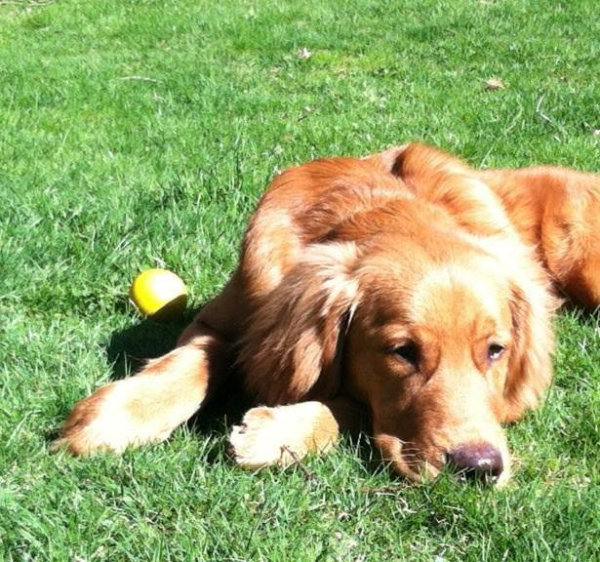
We’d all like our lawn and gardens to be lush and beautiful, but how do accomplish this in a way that’s safe for our pets? There have been several troubling news reports recently about dogs becoming extremely ill from exposure to lawn chemicals. To prevent such tragedies, I’m pleased to share advice from area experts on pet-safe lawn and garden care.
Skip the herbicides. Typical lawn care products use a mixture of poisons to kill fungus, weeds, and pests, yet these can be very harmful to your health and the health of our pets. Dogs and cats are particularly vulnerable. Chemicals can be absorbed through the pads of their feet, or accidentally ingested.
In addition, in the long run some of these products may be doing damage to our lawns. Some weed control products kill off good bacteria and fungi that make soil health and fertile. Fortunately, there are many ways to move to an organically maintained yard that is safer. What’s more, an organic lawn is naturally resistant to weeds and pests.
Get to know your soil. “Organic lawns are all about building a strong root system,” said Janet Walsh, owner of Garden Rooms Landscape Design. “The stronger the roots, the less space there is for weeds. To achieve this, you need the right balance of nutrients in the soil. This can definitely be accomplished without chemical additives.” If you’re unsure of your soil composition, you can get a soil test at UMass to find out what you soil might be lacking.
Strengthen your soil. Lawn clippings and compost are a great way to add valuable nutrients to your soil. They don’t weaker the grass like commercial fertilizers can.
Forgo pesticides. Most insects are actually not harmful to your lawn or garden. For those that are, you can attract birds to your garden for natural insect control.
Be patient. “Transitioning to an organic lawn requires patience, but trust that the benefits will outweigh the immediate pleasure of having a more uniform-looking, chemically treated lawn,” Walsh said. “Organic lawns will not be completely weed-free or look picture perfect, but they can look very good, and have the enormous benefit of knowing that we’re not doing harm to our kids, pets, or water system.”
Aerate your lawn. Soil needs air. If it’s too compacted, air and water can’t get in. You can use a garden fork to loosen the soil.
Mow properly. Grass should be mowed to three inches. This way it shades out the weeds and keeps roots cooler, and requires less water.
Find out what’s inside. Ask what’s is the product before you make a purchase. Many common lawn and garden products, including cocoa husk mulch and other mulch that contain dyes, can be harmful to pets. Likewise, some plant fertilizers actual contain calcium cyanamide, which the EPA has found to be highly toxic to animals.
Check that it’s pet-safe. “Just because a product is organic doesn’t necessarily mean it’s safe for pets,” cautioned Farm Manager Abel Clark of Silverwood Organic Farm in Sherborn. “For example, bone meal and blood meal are both good sources of phosphorous and nitrogen, respectively. However, though both are organic, they can attract animals and potentially cause serious digestive problems in cats and dogs. Also, some perennials, including clematis, geraniums, hostas, and peonies, are toxic to animals. Inquire with a local horticulturist or garden center to ensure new plants you’re buying are pet friendly.”
Pinpoint the issue. “Identifying lawn problems can be complex,” said John Moretti of Weston Nurseries. “Insect damage can mimic the look of weed damage, for example. If you misdiagnose the problem, it can make things worse and stress out the lawn.” That’s why it’s a good idea to bring a small patch of grass or photos of their lawn into the garden center to get advice.
Be careful when applying product. “Often people overuse lawn care products,” Moretti said. “If you have a weed problem in one area of your lawn, you don’t need to blanket the whole yard with weed control. Overuse of chemicals can weaken the soil. Also, be sure to apply the product properly. If you’re using an herbicide, for example, add at least an inch of water after application to get the active ingredients into the soil. This minimizes exposure for pets.”
For more safe lawn and garden tips, visit Beyond Pesticides or the Massachusetts Master Gardeners Association.
